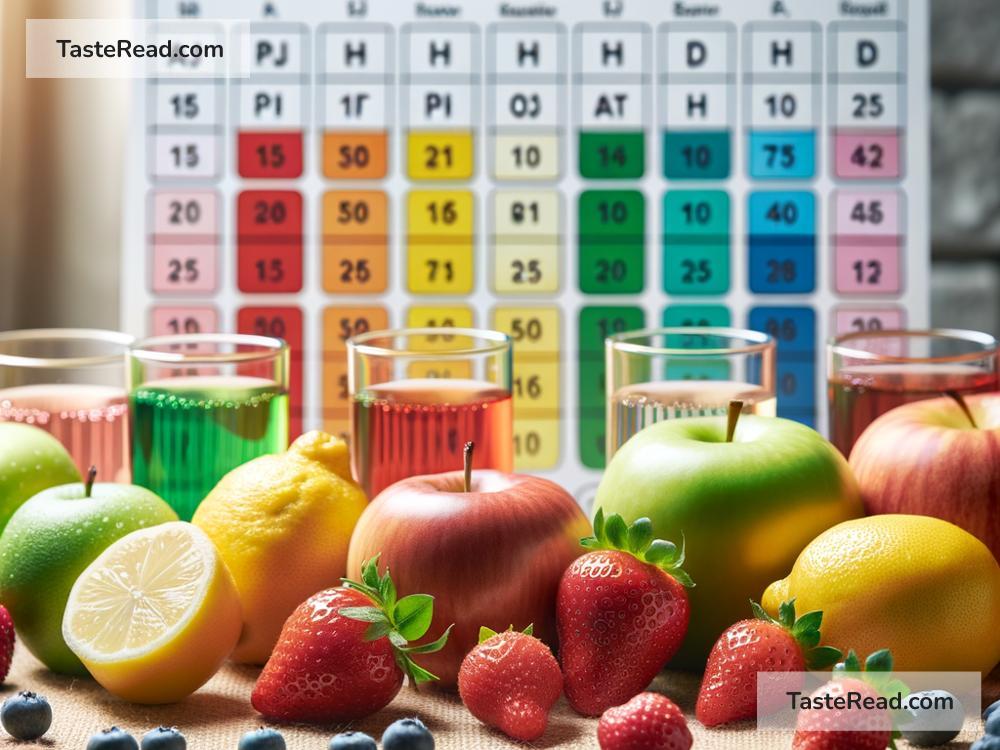The Role of pH in Determining Fruit Taste
Taste plays a major role in how much we enjoy fruits. Some fruits are super sweet, while others are sour or even bitter. But have you ever thought about what gives fruits their specific taste? The answer often lies in something called pH. In this blog, we’ll break down what pH is, how it affects fruit taste, and why understanding pH can help you appreciate the amazing world of fruits even more.
What Is pH?
Before we dive in, let’s talk about pH. The pH scale measures how acidic or basic something is. It runs from 0 to 14:
- A pH of 7 is neutral, like pure water.
- Anything less than 7 is acidic, and the closer the number gets to 0, the stronger the acidity.
- Anything above 7 is basic, also known as alkaline, and the closer the number gets to 14, the stronger the alkalinity.
In the case of fruits, the pH value typically falls on the acidic side of the scale, between pH 2 and 6.
How Does pH Affect Taste?
The pH level of fruit directly impacts how sweet, sour, or bitter it tastes. Here’s how it works:
- Acidity and Sourness
Fruits with lower pH levels (below 4) are more acidic, which makes them taste sour. For example: - Lemons and limes have a very low pH, usually around 2 to 3, which is why they taste so tangy.
- Grapefruits also have a low pH but are slightly less sour due to their natural sugars.
The sourness comes from acids like citric acid, malic acid, and tartaric acid. These acids stimulate your taste buds, creating that sharp, mouth-puckering sensation.
- Sweetness and Balance
Fruits with higher pH levels (closer to 5 or 6) tend to taste sweeter. While these fruits still contain acids, their sweetness comes from natural sugars like fructose and glucose, which balance out the acidity. For example: - Bananas are less acidic, and their sweetness dominates their taste.
-
Mangoes and papayas also have a relatively high pH, making them rich and sweet.
-
Bitterness and Complexity
Some fruits also have bitter notes, which can result from their unique chemical makeup. While bitterness isn’t directly tied to pH, it often interacts with acidity to create a more complex flavor profile. Think of grapefruits — they’re both slightly sour and mildly bitter. -
What About Sweet-and-Sour Fruits?
Fruits like oranges, pineapples, and strawberries have a mix of sweetness and sourness. Their pH usually falls in the middle range, about 4 to 5. The balance of acidity and sugars makes these fruits appealing to most people.
Why Does pH Change in Fruits?
The pH of fruit can change based on several factors, which can affect their taste:
-
Ripeness
As fruits ripen, their acidity tends to decrease, and their sugar content increases. This is why unripe bananas taste starchy and slightly sour, but ripe bananas are sweet and creamy. Similarly, green apples are tangy, while fully ripened apples are sweeter. -
Growing Conditions
The pH of a fruit can also be influenced by where and how it’s grown. Soil type, climate, and even the amount of sunlight a fruit tree receives can affect its acidity and sweetness. For instance, oranges grown in cooler climates are usually more acidic, while those grown in warmer regions are sweeter. -
Processing and Preparation
Cooking or juicing fruit can also change its pH. For example, adding sugar to lemon juice doesn’t raise its pH but masks the sour taste by overpowering the acidity. This is why lemonade tastes less tangy than pure lemon juice.
Why Does pH Matter to Us?
Understanding pH and its effects on fruit taste isn’t just for scientists; it can help you:
-
Choose Fruits You Love
Knowing how pH influences taste can guide you toward fruits that match your preferences. If you enjoy tangy flavors, go for acidic fruits like lemons or raspberries. If you prefer sweeter options, try bananas, peaches, or melons. -
Pair Fruits Together
When preparing fruit salads, smoothies, or desserts, you can combine fruits with different pH levels to create a balanced flavor. For example, pairing the sweetness of mangoes with the acidity of pineapples can make a tropical smoothie taste amazing! -
Experiment in the Kitchen
Chefs often rely on pH knowledge to adjust fruit flavors in recipes. You can do the same by tweaking the acidity or sweetness to suit your taste buds.
Final Thoughts
pH plays a big role in determining the taste of fruits. Fruits with low pH are tangy and sour, while those with higher pH are sweeter. Ripeness, growing conditions, and how you prepare the fruits can also influence their pH and flavor. Understanding this natural science not only helps you enjoy fruits more but makes you a better cook or gardener, too!
So, next time you bite into a lemon or savor a sweet mango, remember: it’s all about the pH! Happy fruit-tasting!


